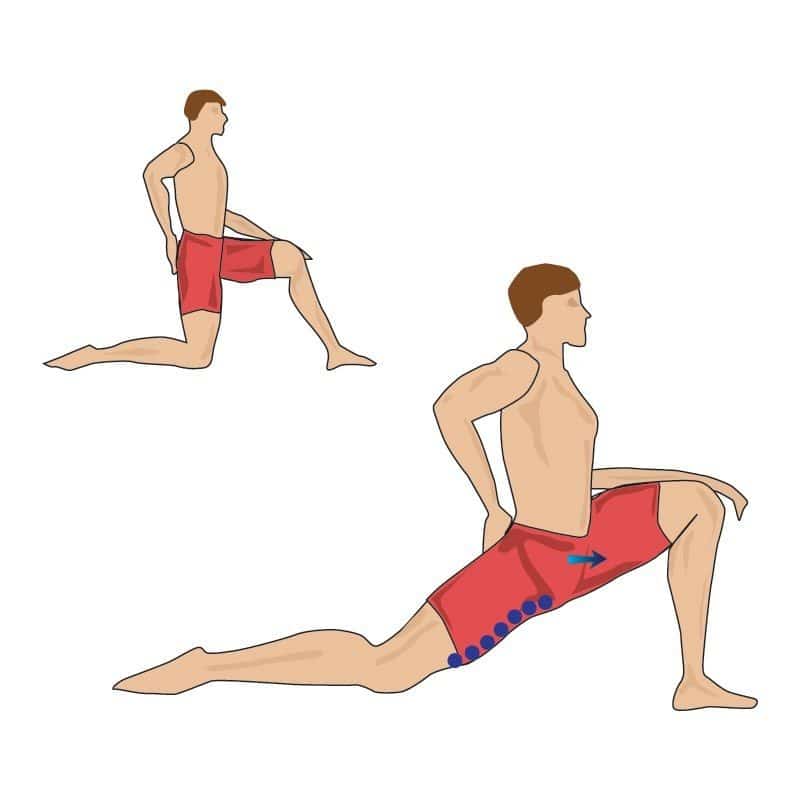Hip and Thigh Stretch
What muscles does the hip and thigh stretch target?
Rectus Femoris
Illiopsoas
How to perform stretch:
Stand with your feet split and lower your back knee to the ground as per the image
Keep your stomach tight and flat
Lean forward from your hips

Anatomy:
Major hip flexors include Psoas Major, Iliacus, Tensor Fascia Lata, Rectus Femoris and Sartorius Muscle.
Together Psoas Major and Iliacus form Iliopsoas, which extends from trunk to the upper end of femur. With the trunk fixed, it flexes the femur towards the trunk and with femur firm in position it bends the trunk towards it. Psoas Minor is rather insignificant and is absent in more than half of population. When present it does not extend beyond the hip joint.
Tensor Fascia Lata acts on both hip and knee joint. It carries out flexion, abduction and internal rotation at hip and extension at knee joint.
Sartorius is involved in flexion, abduction and external rotation of hip as well as flexion of the knee joint.
Advantages:
Hip flexor group aids in lifting the leg by flexing it towards pelvis, during activities like climbing stairs, simple walking, running, marching, kicking etc. Along with this, it bends the trunk towards the leg and therefore plays an important role in performing abdominal curls or in sitting up from lying position.
Inordinate use of these muscles without proper stretching leads to shortening of the muscles. Also sitting for long durations when the muscles do not stretch properly to the total extent causes the same problem. A number of low back problems respond well to the stretching of these muscles; stretching especially helps in relaxing a stiff lumbar spine.
Normal Range of Movement:
With the pelvis swaying backwards, the hip is able to move beyond the knee level.
Hip joint can extend to about 10-30 degrees when pelvis is in neutral position.
Checking for the Length of Muscles:
The person lies face upward on a table, the knees reaching the edge of the table. When one knee is rolled and grasped against the chest, the other knee should keep a right angle with the lower leg suspending down the table. The thigh also should stay in contact with the surface of the table.
In case, the Rectus Femoris muscle is tight the knee would extend. The shortness of Tensor Fascia Lata is confirmed by abduction of the thigh and if the thigh does not remain in touch with the table surface, the cause is shortness of Iliopsoas that only is involved with movement at the hip joint.
Shortness of hip flexors is also demonstrated by lumbar lordosis (an inward curvature of the lower back) with pelvis tilting forward.





